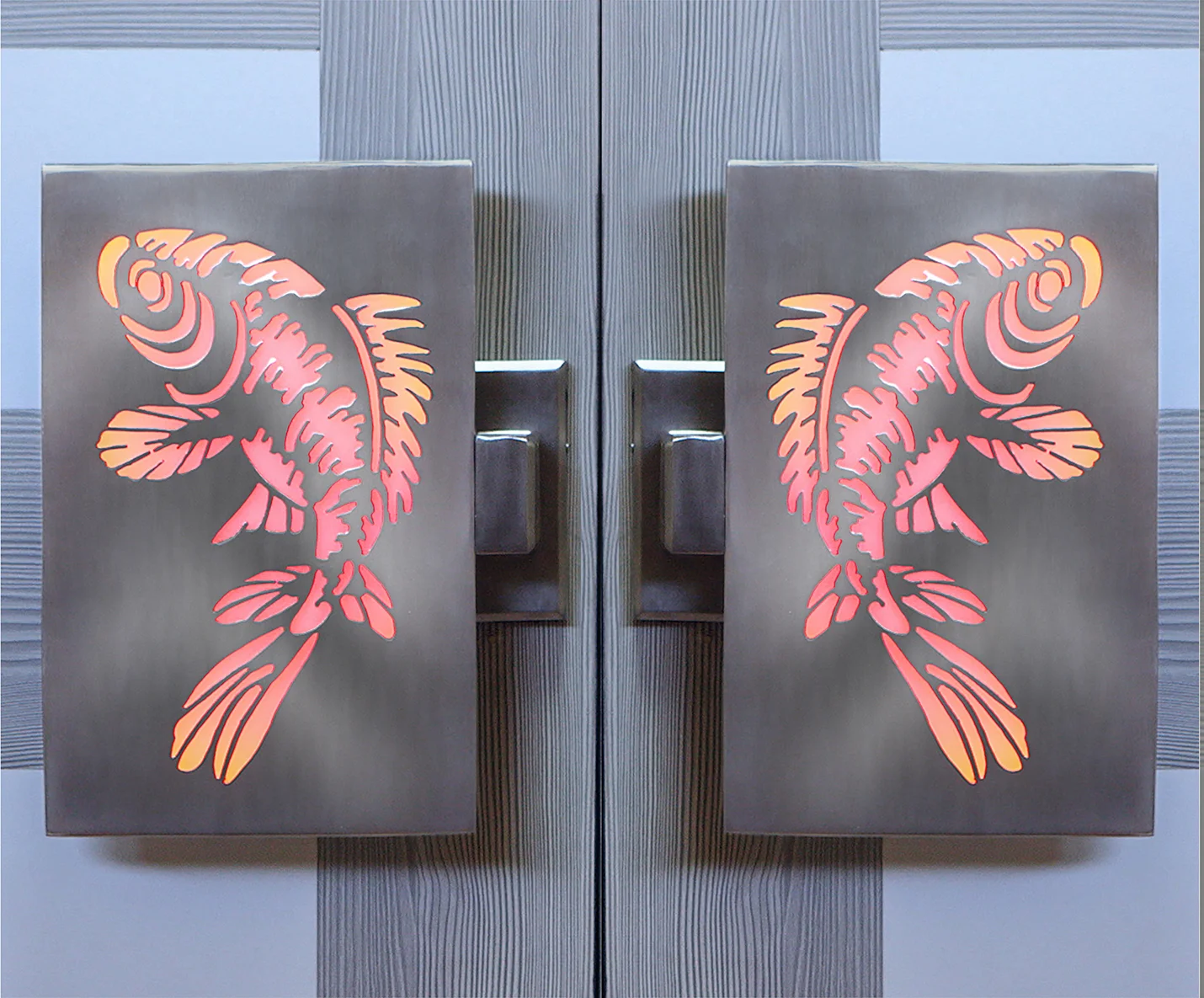Our new illuminated door pulls are hard wired and not battery dependent and I was recently asked how this impacts the type of door chosen.
For some time door lock manufacturers have been making electric mortise and deadbolt locks that can be powered by low voltage wires that release either the bolt or the strike and often this is done by a remote controller.
Our illuminated door handles have the same needs and require;
Power to be supplied to the door
One of the easiest methods of supplying power to the door is through an electric door hinge. Power coming from a low voltage class 2 power supply is delivered to the door jamb into the fixed section of the hinge. The wires then pass through the knuckle or center section of the hinge and on to the operative part of the hinge which is attached to the door itself and which pivots the door open. Electric hinges have the advantage of concealing the wires used to power door handles and locks and most can be ordered for these low voltage applications.
A concealed door loop like the one by Command Access is a low profile alternative to the electric hinge and one that can be freely positioned anywhere on the jamb. While its unobtrusive design and size make it attractive you will still need a hinge to open and close the door. If you are looking for an equally discreet electric hinge you may want to consider the hinge options from Simonswerk.com who offer some very sleek concealed hinges that function in the same way as the surface mounted version but are recessed and flush with both the door jamb and door edge. These hinges will require a reasonably solid outer door edge that can be routed out for the hinge plate.
Off course the power can always be supplied through a surface mounted conduit or metal arm which may be an option for commercial projects or areas where the reverse side of an entry door is less visible.
Hollow area for power channel
To power the LED handle the wires from the handle will have to be routed through the door and connected to the power that is being delivered to the door jamb. Provided the door has a hollow frame this should be relatively easy as the cables are small 22 gauge wires and can be fed through a channel in the door frame. The top and bottom door rails for hollow metal doors will often have a separate cover that can be attached after the wire conduit has been fed through.
Impact on Door Design
In summary your door will need to have a hollow outer frame or pre-made channel designed into the construction so that cables can be fed through to the illuminated handle. The channel can easily be incorporated into the construction design of the door and major door manufactures are already doing this so that the consumer can remotely open and lock the entry door using a remote controller to activate an electrically powered lock.


